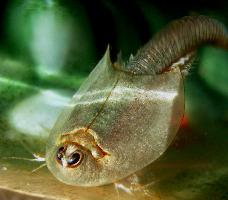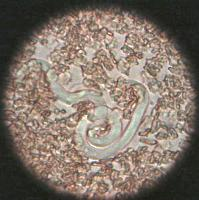
Description de l'animal
The Plumose anemone, scientifically known as Metridium senile, is a fascinating and visually striking marine invertebrate belonging to the Actiniaria order. It is commonly found in the cooler waters of the Atlantic Ocean, Pacific Ocean, and the North Sea, thriving in a wide range of depths from shallow rock pools to depths of several hundred meters. This species is known for its distinctive and elegant appearance, which contributes to its common name, reflecting the plume-like structure of its tentacles.The body of the Plumose anemone is composed of two main parts: the column and the oral disc. The column is cylindrical and smooth, often anchored to a hard substrate by a strong adhesive foot known as the basal disc. This enables the anemone to firmly attach itself to rocks, shells, or even man-made structures. The oral disc is situated at the top of the column and is surrounded by numerous long, slender tentacles that can vary in color from white, cream, to shades of orange and brown. These tentacles are not only beautiful but also highly functional, equipped with stinging cells called nematocysts. These cells are used for both defense against predators and to capture prey, which primarily includes small fish and plankton.
One of the most striking features of the Plumose anemone is its size and the density of its tentacles. It can grow to a considerable size, with some specimens reaching up to 30 cm in height. The tentacles are arranged in multiple rows around the oral disc, giving the anemone a full, bushy appearance that resembles a feather or plume, hence its common name. When the tentacles are extended, they create a stunning display that is not only a spectacle for divers and marine enthusiasts but also serves an important ecological function by providing shelter and protection for various small marine creatures.
The reproductive strategies of Metridium senile are versatile, encompassing both sexual and asexual reproduction. Sexually, they release eggs and sperm into the water column, where fertilization occurs. The resulting larvae are planktonic, drifting with ocean currents until they find a suitable substrate to settle on and grow into a new individual. Asexually, Plumose anemones can reproduce through a process called pedal laceration, where pieces of the base detach and develop into new anemones.
In terms of habitat, the Plumose anemone is not particularly picky, but it does favor areas with strong currents and high levels of dissolved oxygen, which help to bring food within reach of its tentacles. It is often found on rocky reefs, pier pilings, and in tidal zones where it can be partially exposed to air during low tides without harm.
Despite its delicate appearance, the Plumose anemone is a resilient and adaptable creature that plays a significant role in its ecosystem. It acts as both predator and provider, contributing to the biodiversity of marine environments. Its presence indicates healthy underwater habitats, making it an important species for marine conservation efforts. The beauty and ecological significance of Metridium senile make it a subject of interest not only for marine biologists but also for underwater photographers and conservationists seeking to preserve the intricate web of life found in our oceans.
Animaux similaires
Nouvelles photos d'animaux
Top 10 des animaux
- Dolphin gull (Leucophaeus scoresbii)
- Diana monkey (Cercopithecus diana)
- Moustached guenon (Cercopithecus cephus)
- Galápagos tortoise (Geochelone nigra complex)
- Russian tortoise (Testudo horsfieldii)
- Stone loach (Barbatula barbatula)
- Japanese macaque (Macaca fuscata)
- Greek tortoise (Testudo graeca)
- Common flying dragon (Draco volans)
- Vendace (Coregonus albula)


